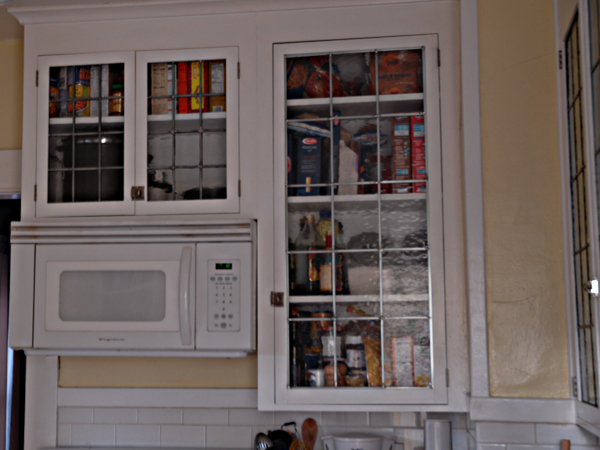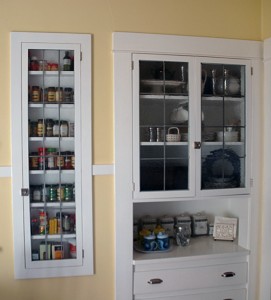I was hanging the second of my newly built kitchen cabinet doors, a simple frame-and-panel, paring a hinge mortise when I realized the full weight of the task in front of me. One door hung, one more that would be hung . . . eventually. I shaved off another paper thin layer of wood, then looked up and counted the number of doors that needed to be hung. Only fourteen more to go. I swore quietly to myself and checked the fit of the hinge in its mortise.
It would have been really easy to swap out hardware, then patch and repaint the existing overlay doors, but we liked the look of inset doors, so over the course of the better part of year, I built and hung new doors, working on batches in between other projects. Construction was straightforward–poplar frames joined with stub tenons around 1/4″ plywood panels on the lower doors and leaded glass panels in the uppers. I cut the tenons on the rails by making multiple passes over a regular blade in the table saw with the fence set the length of tenon from the blade. To plow the grooves in the styles, I set the fence 1/4 inch from the blade, set blade height at 1/2″ inch, then ripped a groove in my stock. By flipping the stock and making another pass over the 1/8″ blade, I ended up with a 1/4″ groove a half inch deep. These grooves hold the plywood panels, but for the uppers, I routed out the inside edges of the stock to produce a half-inch rabbet to mount the leaded glass panels. The doors were sized to the exact dimensions of the opening, then planed to fit with a reveal.
The doors are hung with butt hinges. I marked the locations by positioning the hinges, then striking a line with a knife, then chopped mortises using a chisel. After coats of primer and paint, the doors were ready for final installation.

